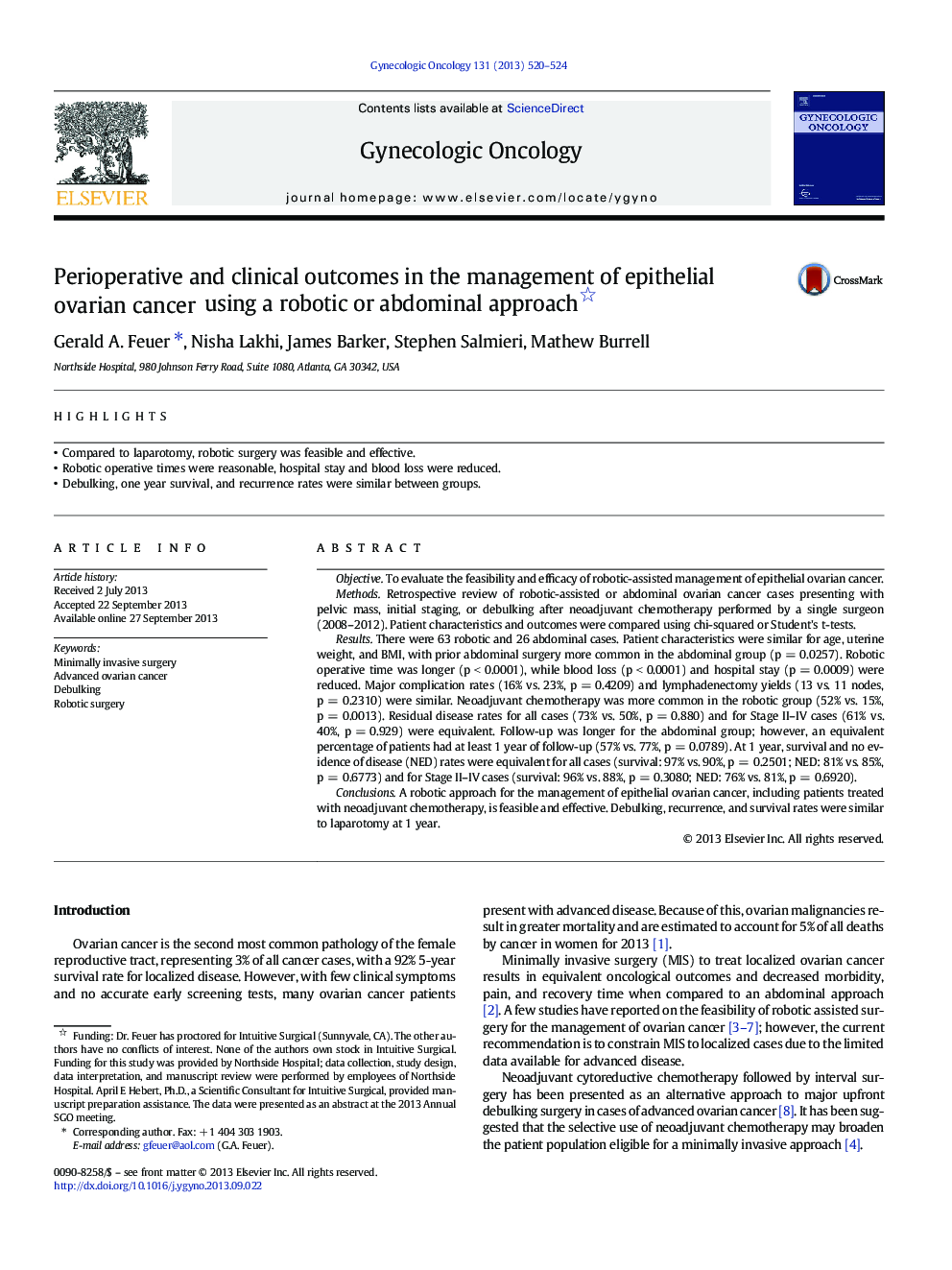| کد مقاله | کد نشریه | سال انتشار | مقاله انگلیسی | نسخه تمام متن |
|---|---|---|---|---|
| 3944700 | 1254225 | 2013 | 5 صفحه PDF | دانلود رایگان |

• Compared to laparotomy, robotic surgery was feasible and effective.
• Robotic operative times were reasonable, hospital stay and blood loss were reduced.
• Debulking, one year survival, and recurrence rates were similar between groups.
ObjectiveTo evaluate the feasibility and efficacy of robotic-assisted management of epithelial ovarian cancer.MethodsRetrospective review of robotic-assisted or abdominal ovarian cancer cases presenting with pelvic mass, initial staging, or debulking after neoadjuvant chemotherapy performed by a single surgeon (2008–2012). Patient characteristics and outcomes were compared using chi-squared or Student's t-tests.ResultsThere were 63 robotic and 26 abdominal cases. Patient characteristics were similar for age, uterine weight, and BMI, with prior abdominal surgery more common in the abdominal group (p = 0.0257). Robotic operative time was longer (p < 0.0001), while blood loss (p < 0.0001) and hospital stay (p = 0.0009) were reduced. Major complication rates (16% vs. 23%, p = 0.4209) and lymphadenectomy yields (13 vs. 11 nodes, p = 0.2310) were similar. Neoadjuvant chemotherapy was more common in the robotic group (52% vs. 15%, p = 0.0013). Residual disease rates for all cases (73% vs. 50%, p = 0.880) and for Stage II–IV cases (61% vs. 40%, p = 0.929) were equivalent. Follow-up was longer for the abdominal group; however, an equivalent percentage of patients had at least 1 year of follow-up (57% vs. 77%, p = 0.0789). At 1 year, survival and no evidence of disease (NED) rates were equivalent for all cases (survival: 97% vs. 90%, p = 0.2501; NED: 81% vs. 85%, p = 0.6773) and for Stage II–IV cases (survival: 96% vs. 88%, p = 0.3080; NED: 76% vs. 81%, p = 0.6920).ConclusionsA robotic approach for the management of epithelial ovarian cancer, including patients treated with neoadjuvant chemotherapy, is feasible and effective. Debulking, recurrence, and survival rates were similar to laparotomy at 1 year.
Journal: Gynecologic Oncology - Volume 131, Issue 3, December 2013, Pages 520–524